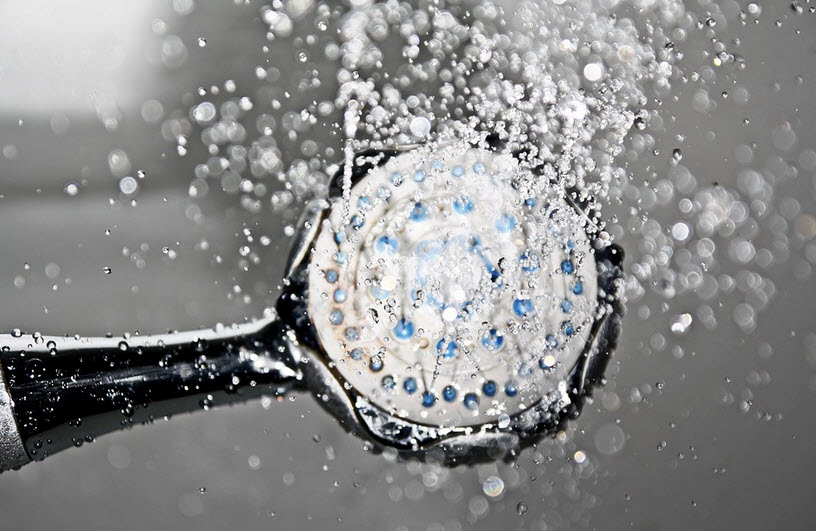Tips for using and wasting less water
A navy shower – also known as military shower, combat shower and G.I bath – is a method of showering that require very little water.
- Shower for 30 seconds to get wet and rinse off the worst of the dirt.
- Shut off the water.
- Lather soap and shampoo and apply to your body and hair, respectively.
- Turn the shower on again and quickly rinse away shampoo and soap.
The Navy shower derives its name from the Navy ships, where freshwater tend to be scarce. A proper Navy shower can use as little as 3 U.S. gallons (11 litres) of water for someone with short hair. Compare this to the standard United States ten-minute long shower that requires a whopping 60 U.S. gallons (230 litres) or more. If you shower every day, as many of us do, these numbers add up quickly.

Don´t run the washing machine half-empty
Wait until you have a full machine before you do laundry.
Alternatively, find out if your machine has a water-saving ”reduced load” setting or similar, and use it when the machine isn´t full.
Don´t run the dishwasher empty
- If you use a dishwasher, make sure it is fully loaded before you turn it on.
- Also, learn how to properly load the dishwasher. In most situations, pre-rinsing is not necessary if you have a good dishwasher and load it correctly.
Don´t hand-wash dishes under running water
When you hand-wash dishes, don´t do it under running water. Fill up two tubs. Use one for cleaning and one for rinsing off the dish soap.
Use the same water multiple times in your household
- Use the pasta water to make a sauce – the extra starch is great.
- Your house plants or garden will also love waste-water from cooking, just make sure you let it cool down to room temperature first.
Create a garden that is suitable for your part of the world
If you have a garden in an arid part of the world, work with nature instead of against it. Chose plants that are adapted to this type of environment instead of planting species that require huge amounts of constant watering. As a bonus, the local wildlife such as birds and butterflies will really appreciate getting the type of species that they are used to.
The same is, of course, true if you live in a part of the world with a dry season and a rainy season. Pick plants that know how to maximize the rainy season and survive through the dry season. There are so many wonderful species and variants to choose among. Some will even bloom during the dry season!

Cut down on indirect consumption of water
A lot of the water that goes into your ”water footprint” is actually not consumed by you directly. Instead, it goes into producing food and items for you, including clothing. Turning off the water while you brush your teeth tonight might make you feel like a hero, but it bleaks in comparison to the water required to produce new jeans and shirts for our wardrobes.
Here are just a few suggestions:
- Buy less stuff.
- Take good care of the stuff you have.
- Fix and mend things.
- Re-use and re-purpose the stuff you already have.
- If there are things that you don´t use, give them away to someone who will use it.
- When you need something, ask around first – maybe someone you know wants to get rid of something like that.
- Buy second-hand instead of buying new.
- Buy quality items that will last a long time.
When it comes to food, things get a bit tricky, because a food that is a sustainable choice when grown in one location can be a super waste of water in another location. For instance, the walnuts exported overseas from California in an average year have been watered with more water than the total water consumption going on in homes and in businesses in the city of Los Angeles (where roughly 10 million people live). Almonds are another big culprit here, since they are widely grown in arid parts of California where they require extensive watering. That doens´t mean that walnuts and almonds are always an unsustainable choices – it all depends on the circumstances. Meat-production is another tricky area, since certain types of livestock raising requires vastly more water and creates more water-waste than others.
